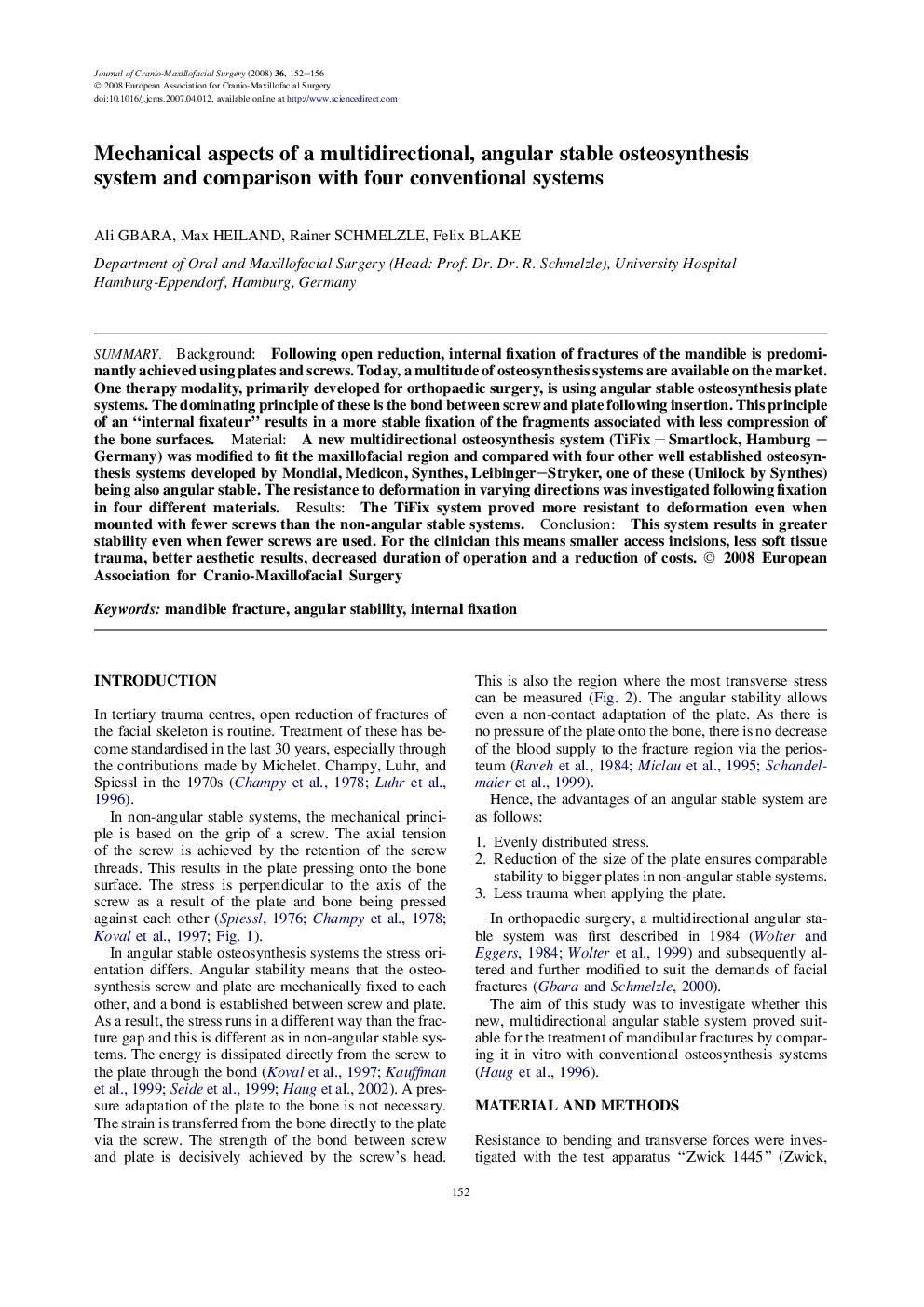| Article ID | Journal | Published Year | Pages | File Type |
|---|---|---|---|---|
| 3144253 | Journal of Cranio-Maxillofacial Surgery | 2008 | 5 Pages |
SummaryBackgroundFollowing open reduction, internal fixation of fractures of the mandible is predominantly achieved using plates and screws. Today, a multitude of osteosynthesis systems are available on the market. One therapy modality, primarily developed for orthopaedic surgery, is using angular stable osteosynthesis plate systems. The dominating principle of these is the bond between screw and plate following insertion. This principle of an “internal fixateur” results in a more stable fixation of the fragments associated with less compression of the bone surfaces.MaterialA new multidirectional osteosynthesis system (TiFix = Smartlock, Hamburg – Germany) was modified to fit the maxillofacial region and compared with four other well established osteosynthesis systems developed by Mondial, Medicon, Synthes, Leibinger–Stryker, one of these (Unilock by Synthes) being also angular stable. The resistance to deformation in varying directions was investigated following fixation in four different materials.ResultsThe TiFix system proved more resistant to deformation even when mounted with fewer screws than the non-angular stable systems.ConclusionThis system results in greater stability even when fewer screws are used. For the clinician this means smaller access incisions, less soft tissue trauma, better aesthetic results, decreased duration of operation and a reduction of costs.
